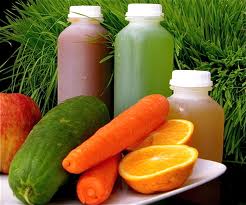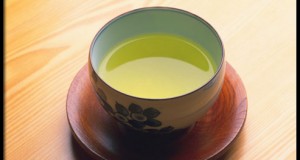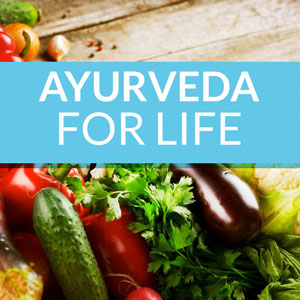What Cleanse is Best for your Body-Mind Type?
Ayurveda Practitioner Weighs In
 Cleanses are so HOT these days, they’re like a bikram yoga class in the summer. But just like not every yoga class is for every body, not every cleanse is going to benefit every body in the most optimal way. So before diving into the vast juicer-kale-mung bean laden world of cleansing, take a moment and use this guide below so you hit the Ojas-full feelings of detoxification & rejuvenation just right, and skip the fatigue/wrinkles/depression of depletion cleansing.
Cleanses are so HOT these days, they’re like a bikram yoga class in the summer. But just like not every yoga class is for every body, not every cleanse is going to benefit every body in the most optimal way. So before diving into the vast juicer-kale-mung bean laden world of cleansing, take a moment and use this guide below so you hit the Ojas-full feelings of detoxification & rejuvenation just right, and skip the fatigue/wrinkles/depression of depletion cleansing.
I realize this post might be a little controversial and I want to start off with the old adage of Ayurveda (the medicine of the Vedas): “Nothing is good. Nothing is bad.” because it’s all about who it’s for, which is why I love Ayurveda so much in the first place. Everything in this world has a way of acting as a medicine and a poison; it all depends on whom it’s for and how it’s used.
So keeping that in mind, one could say that all methods of cleansing could potentially be “good” just so long as they’re used by the right person – and for the appropriate length of time. For clarity, I’m going to go through some of the most common types of cleansing below but first, the basic constitutional types so that you have a frame of reference for the doshas.
Imbalances of the Vata-type Cleanser: very low weight or potentially underweight, weight accumulates around waist/belly, anxiety, worry, feels easily overwhelmed, insomnia (waking in the night), lack of direction, dry skin, constipation (lack of daily bowel movement or small pebble-like poops), abdominal distention, bloating, gas, dislike of wind, often cold, PMS: cramps bloating fatigue, lack of menses. *And if you’ve had an eating disorder in the past, look no further.
Imbalances of the Pitta-type Cleanser: medium body fat, weight accumulates around thighs & hips, stress, perfectionist, critical, anger (repressed or quick to explode), insomnia (can’t settle down at night), inflammatory skin conditions, acne, loose bowels, very smelly gas, generally runs hot, PMS: acne anger.
Imbalances of the Kapha-type Cleanser: plentiful body fat (can be overweight but not necessarily), weight accumulates evenly all over body, dullness of mind, lethargic, depressed, over-attachment to belongings/emotions/habits, wakes feeling sluggish even with 8-10 hours sleep, congestion-prone, can have constipation but due to stagnancy so will improve with exercise, PMS: breast tenderness water retention.
So now what’s the right cleanse-medicine for you…
Sunshine & Water Cleanse 
This is sometimes recommended in Ayurveda for true Kapha constitution individuals and only for a short amount of time. This is not something I would ever recommend to someone living in a city, who has a job, and/or can’t take absolute rest. Continue to juice cleansing for why…
Juice Cleansing
This is perhaps the most popular type of cleansing at present and for good reason. Juice cleansing can balance Pitta and Kapha all depending on what types of juice you use. Juice cleanses typically use lots of bitter and astringent greens both of which are balancing for Pitta and Kapha. Kapha needs ample spices to be sure its digestive fires stay up like ginger, black pepper, and cinnamon. Pitta can follow a juice cleanse for a day perhaps but without the strong fire of Pitta being fed, it can blow out of proportion even more so than before. Don’t believe me? Find a firey type who is doing a juice cleanse and see how “balanced” they stay before they want to rip someone’s head off. Thinking “oh but that passes”? Scroll down to Signs of good cleansing below.
Now, Vata-types, I know that juice cleansing appeals to you because it just looks so simple. Like you wouldn’t have to think about anything, and you’d feel so “clean” and “clear”. I know, and I hear you. But how about feeling grounded and calm so you can think clearly? How does that sound? “Cleansing” really isn’t what Vata-types really need. In some ways they can cleanse their lives of things that are making their Vata worse like coffee, sugar, alcohol, and eating un-mindfully which for most will feel like a big “cleanse”. What Vatas don’t need is something that’s going to strip them down and make their nervous system even more raw to the elements around them. They need to learn how to build a comforting home in their own bodies through nourishing rituals and meals, so that they feel that they can better weather the storms of life. Vatas, darlings, scroll down to Kitchari Cleanse…
Raw Foods Cleanse
I love me some raw foods. Yes, that was my Pitta talking. Raw foods for a few days can be just what the doctor ordered for someone of strong Pitta constitution. Their blazing digestive fire can happily handle eating raw for a little while and the extra work required to digest raw foods can help bring that excess fire to balance. Kapha folk, meh, you could do this for a little while but ultimately you’ll want to bring back those heating spices I mentioned in the juice cleanse section and hot teas or you’ll never spark that fire that you need to get the spring back in your step and instead the food you eat will just sit in your belly and not feel like it’s going anywhere anytime soon. Vatas, if you want to feel spacey, and more prone to fatigue, bloating, and constipation, give this a try; in other words, please don’t go there with the raw food diet.
Kitchari Cleanse
Ah, Kitchari, the traditional dish of Ayurveda made of mung beans, rice, ghee, and spices. Kitchari is the star of the Pancha Karma diet (if you don’t count ghee). The Ayurvedic Cleansing that you see offered by myself and the majority of Ayurvedic Practitioners here in the west is an incredibly mild version of PK (if we can even say that) as PK should only be done under the keen supervision of a qualified practitioner and away from life (work, family, bad weather etc). Kitchari is balancing to all doshas provided it’s done with appropriate portions/spices and for an appropriate time (not too long for Vata). Kaphas do well with more beans and spices and less ghee and rice. Pittas do well with equal parts beans and rice, lots of cilantro, and some ghee & appropriate spices. Vatas do well with more rice, ghee and spices and less beans. Like the above cleanse methods, a Kitchari cleanse follows the Signs of good/bad cleansing too.
Some of the many great things about Kitchari:
- It’s a complete protein, which means you can eat it and still have energy for a full day of work/life
- It’s incredibly easy to digest. So long as the spices are right, no one has any belly/GI trouble after eating this.
- It soothes the nervous system without bogging it down. Kitchari because it’s so easy to digest remove any stress from digestion allowing the body’s tissues to detox what they don’t need and take the nutrients they do.
- Kitchari heals with its amazing spices like cumin, coriander and fennel.
- Mung beans have been used for centuries to detox the body.
If a Kitchari Cleanse sounds right to you, join the online cleanse I’m leading with the Doctor Blossom Team this fall!
Whole Foods “Cleanse”
For some this is perfect. This diet will suit all doshas though might not be the best medicine for Pitta and Kapha. Giving your body a break from all processed or refined foods, stimulants, and depressants can be huge! The better your digestion can function, the better your body can eliminate the toxins you naturally come into contact with. If your week typically includes more days with than without coffee, alcohol, refined sugar, baked goods, or processed meats then this could be the perfect place for you to start. If you’re considering one of the other cleanses it’s wise to include a few days of this Whole Foods diet on the start and end to avoid any boomerang-effect that brings you back into your old less healthy habits/crutches.
What To Look For While Cleansing
Signs of good cleansing:
- Improved sleep
- Improved energy (after the initial rest period that your body has been craving)
- Feeling less sluggish in the morning
- Clear lustrous skin
- Improved digestion (happy belly)
- Sattvic (peaceful) mind
- Grounded clear thinking
- Increased comfort in your body
Signs that it’s not the right cleanse for you or that you were doing the right one but for too long: Excessive cleansing leads to depletion of Ojas and increase of Vata so you’ll start looking more like the Vata-type Cleanser if you cleanse for too long or too strongly.
Signs of not-so-good cleansing:
- Increased aggression, anxiety, lethargy
- Feeling “spacey”
- Feeling cold, especially hands and feet
- Waking in the night
- Bloating
- Constipation
- Loss of appetite
- Deep fatigue
- Sustained achiness and/or popping joints
If you’re giving up the famous dietary crutches (caffeine, alcohol, sugar, meat) there are often a few days of the less fun detox with some headaches, body aches etc. It varies completely from person to person often having little correlation with how much of the crutch foods they were using. If in two or three days these detox symptoms haven’t cleared up and you’re not feeling more of the good cleansing signs, then adjustments need to be made.
I hope this article helps shed some light on what method of cleansing would best suit your current state of health. If you’re looking to learn more about what fits you, you can always book a consultation with an Ayurvedic Practitioner (like me!).
If you’re considering a cleanse of any kind it is always a good idea to consult your health practitioner first.
 Join Kate in the Doctor Blossom Online Fall Cleanse where you’ll receive a cleanse catered to your unique constitution and current imbalances!
Join Kate in the Doctor Blossom Online Fall Cleanse where you’ll receive a cleanse catered to your unique constitution and current imbalances!
Kate Lumsden, a San Francisco-based Ayurvedic Practitioner & Yoga Teacher, spreads her love for these healing practices in her home city and beyond (via phone & skype) through her recipe blog, group cleanses, yoga classes and wellness coaching practice. Catch her on Facebook or Twitter where she posts regularly on how to weave Ayurveda into everyday life in fun, juicy ways.











